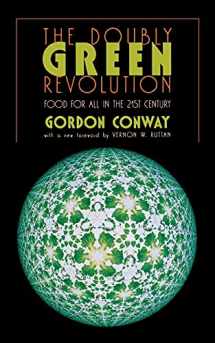
The Doubly Green Revolution: Food for All in the Twenty-First Century (Comstock Book)
Book details
Summary
Description
Today more than three quarters of a billion people go hungry in a world where food is plentiful. A distinguished scientist here sets out an agenda for addressing this situation. Initially published in 1997 in the United Kingdom, the book is now available in the first edition produced for the Western hemisphere. In it, the author has updated information to reflect current economic indicators. This volume includes a foreword written for the previous edition by Ismail Serageldin of the World Bank.
The original Green Revolution produced new technologies for farmers, creating food abundance. A second transformation of agriculture is now required―specifically, Gordon Conway argues, a "doubly green" revolution that stresses conservation as well as productivity. He calls for researchers and farmers to forge genuine partnerships in an effort to design better plants and animals. He also urges them to develop (or rediscover) alternatives to inorganic fertilizers and pesticides, improve soil and water management, and enhance earning opportunities for the poor, especially women.


We would LOVE it if you could help us and other readers by reviewing the book
Book review



